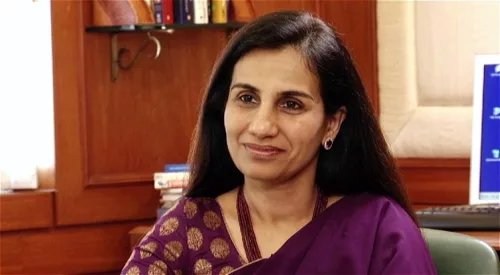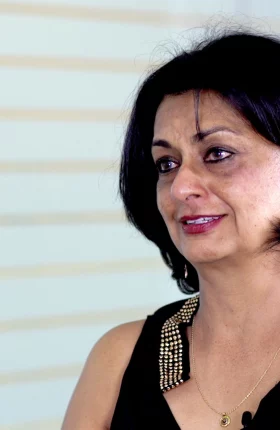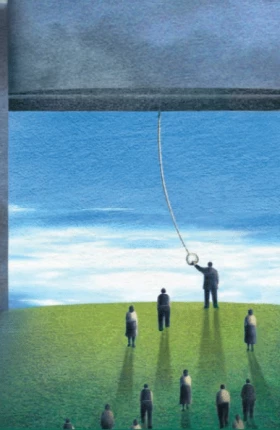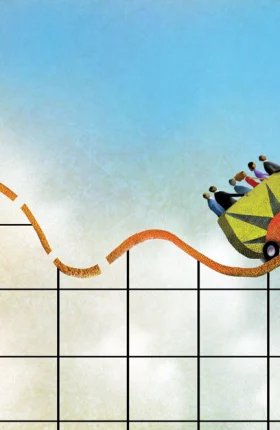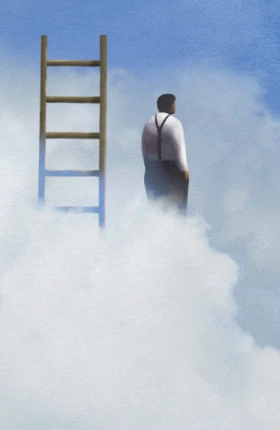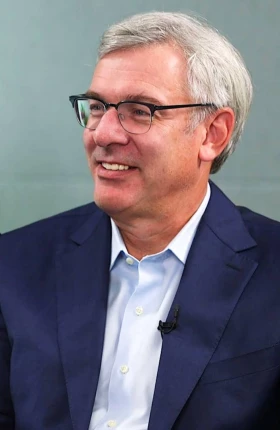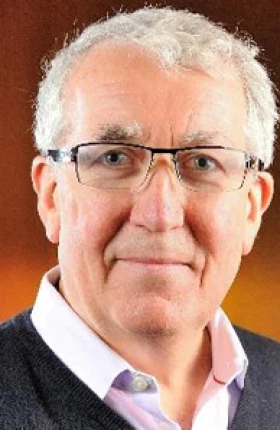In May 2009, when Chanda Kochhar ascended as CEO of ICICI Bank , the world economic crisis was in full swing. The institution, India’s second largest bank, had previously experienced rapid growth but now required rapid change. Kochhar quickly launched a transformation to rebalance the bank’s mix of loans and funding and to cut its operating and credit costs. These measures were designed to enable ICICI Bank to resume growth with a fine-tuned business model—indeed, Kochhar wants the bank to rank among the top 20 in the world.
Kochhar, who joined ICICI in 1984 as a management trainee and had been the architect of its successful push into retail banking , understood that she could not simply issue a new strategy and expect compliance.
Instead, she undertook a multipronged program and spent a large portion of her time explaining the new strategy to ICICI Bank’s employees, investors, and regulators. Kochhar needed to convince employees—who were unaccustomed to consolidation —of the overall need for the changes; she also needed to demonstrate steady progress to regulators and investors.
To give employees and other stakeholders confidence that the transformation was moving forward, Kochhar built it around the achievement of regular milestones. But she also recognized that just hitting financial metrics can be a grind, so she blended that discipline with a vision of how these steps would enable ICICI Bank to resume growth down the road. This mix of short-term realism and long-term idealism gave employees the right combination of push and pull, allowing them to persevere through the consolidation and look to the future.
Janmejaya Sinha, The Boston Consulting Group’s chairman of Asia-Pacific, recently talked with Kochhar.
You were appointed CEO in May 2009, bang in the middle of the global financial crisis. ICICI was facing some challenges of its own. What were your immediate priorities?
The immediate priority was to realign the strategy of ICICI Bank to the new economic environment. This required conceptualizing, communicating, and executing the strategy.
Basically, we were saying, “Having come through a period of very aggressive growth in the past 20 years, let’s look at the next one or two years as years of consolidation.”
What was your level of involvement? Were you able to delegate, or did you have to lead from the front?
I think my involvement was essentially leading from the front. I spent a lot of time meeting people at various levels in the organization, explaining to them what the new strategy would be, why the new strategy was relevant, and what the logic was behind it.
I spoke to them about the three or four priorities that we had set out for a year or two, how they fit into a longer-term five-year positioning of ICICI Bank, and how they would actually position us for the next phase of growth.
The big lesson for me was that you have to always put the strategy in perspective. You cannot just dictate a strategy and say that this is what I want done.
Did you have to affect the culture in any way—reinforce it, change it, or manage it?
The culture is the basic DNA of the organization. And in my view, the DNA of the organization is not growth or consolidation. ICICI’s DNA and strong point have always been the agility and the ability of the team to execute a strategy. I think the team is very entrepreneurial and executes a strategy in a very dynamic and agile manner.
I think that the culture remained the same. We executed a growth strategy when the environment demanded that strategy. We executed a consolidation strategy, with as much finesse, when the environment demanded a consolidation strategy.
One of the things that happens when you shift from growth to consolidation is that there is a slowing down of promotions, and the ebbs and flows in morale are more accentuated. Did you experience that? How did you manage that?
Putting the strategy in perspective helped a lot. What we said was that while we are going to go through this period for the next one or two years—and we are going to consolidate and there is going to be no growth and there would be tightening of the belt—we are doing all this so that we become efficient. The goal was that two years later, when we started to grow, our ROEs [returns on equity] and ROAs [returns on assets] would be much higher. I think people saw that medium-term picture, rather than just the one-year picture, and that helped to keep morale stable.
To start with, you can only keep morale stable. But then gradually, as we started executing the strategy and people saw that the strategy could be executed and saw the results, morale started improving. I would say that the improvement in morale started happening even before the financial compensation came because people saw positive movement on the direction of the strategy.
You were dealing with the employees, investors, customers, and regulators. Which was the hardest part? And where did you, as a leader, spend most of your time?
It was as important to explain the strategy to the regulators as it was to explain it to the investors, analysts, and employees. So I would say that all the stakeholders needed my attention and needed to see the logic of the strategy.
It was important to go back to these groups almost every quarter and say, “This is what we had set out to do, and this is where we are in the journey.”
We had shown them a two-year path and also told them how we would gradually move toward it every quarter or six months. We were moving in that direction and moving pretty well. And that gave people the confidence to say that we could execute the strategy that we were talking about.
What would you identify as some of the key tenets a CEO must have in the twenty-first century?
The pace of change in the twenty-first century is going to be even faster than it has been in the past. The ability of the CEO to foresee change and prepare the organization for the coming environment—rather than just coping with the existing environment—is very important for the success of an organization.
The next tenet that would be especially relevant for India is that as we keep growing at this fast pace, we have to rely on leadership that will be younger and younger. We are a young country. The pace of growth is actually faster than the rate at which our leadership is aging. As leaders, we will have to learn how to rely on younger and younger people: give them more responsibilities at a younger age, mentor them that much better, guide them that much more, and get them to handle more responsibilities.
What advice would you give to a CEO?
I think you have to find the right balance between being a visionary and making sure that execution takes place. What happens with most CEOs is that they go to one extreme. They are so visionary that their ideas sometimes don’t transform into reality, or they get so involved in day-to-day matters that they don’t allow their team to breathe, or they themselves do not have the time to think of the next big step.
Any other comments for CEOs?
As you go up the chain, life is more and more lonely. It’s very important to be in touch with grounded reality. I’ve always said that the best learning that I get, now that I have become a CEO, is when I spend 30 to 40 minutes at a branch. It’s not in the ivory tower of Bandra Kurla Complex, where I sit every day. But if I really spend some time at a branch, I see how customers come in and how my youngest employees speak to the customers and deal with them. I think that is the best learning. It is always important to keep touching base with reality so that whatever you dream of has some connection with reality.
How will you judge whether you are successful?
That is really not for me to judge. I think it is for the next generations to judge. The only thing I would say is that I have created a vision for myself and therefore for my team and my organization. By global standards, we are a very small bank, maybe fifty-fifth in the global ranking. Can we aspire to become in five years one of the top 20 banks in the world? As of now, I just have that five-year vision. And then we’ll set our aspirations as we go along.
